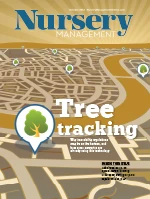 Every greenhouse should have a consistent, ongoing scouting program to locate pest problems and provide information on pest pressure. This is essential for determining appropriate and timely pest-control actions and evaluating effectiveness of pest-management strategies. Because scouting aids in the early detection of pest problems, slower-acting methods that are more environment friendly and safer for workers can be used. Basing pest-control strategies on scouting data coupled with the use of damage threshold levels reduces pesticide use and results in improved plant quality, lower production costs, improved worker safety, lower environmental risks, and compliance with regulations. Here are some tips to start a scouting program for your greenhouse operation.
Every greenhouse should have a consistent, ongoing scouting program to locate pest problems and provide information on pest pressure. This is essential for determining appropriate and timely pest-control actions and evaluating effectiveness of pest-management strategies. Because scouting aids in the early detection of pest problems, slower-acting methods that are more environment friendly and safer for workers can be used. Basing pest-control strategies on scouting data coupled with the use of damage threshold levels reduces pesticide use and results in improved plant quality, lower production costs, improved worker safety, lower environmental risks, and compliance with regulations. Here are some tips to start a scouting program for your greenhouse operation.
1. Assign a scout. Make sure the scout can provide a dedicated responsibility to regular monitoring. Many greenhouse managers prefer in-house scouts to hiring an independent professional scout or pest control adviser because they know the operation and are on-site every day, which allows flexibility for changing the scouting schedule to accommodate pesticide applications. However, if employee scouts have other responsibilities in addition to pest management, scouting may be neglected during busy periods, so hiring a professional scout is recommended.
2. Establish monitoring and record-keeping processes. Monitoring methods always require regular checking for pests and plant damage. In addition to inspecting plants, use sticky traps and other indirect sampling methods. It’s important to use the same methods each week to make results comparable among sampling dates and to determine if pest populations are increasing or decreasing. The key is to find a simple procedure that provides the necessary information concerning your pest complex in a timely manner.
Good records are crucial for evaluating and improving your scouting program. Include information such as pest identification, size and location of the problem, control options used, effectiveness of those options, labor and material costs, and crop quality and yield. Environmental conditions records, such as temperature and relative humidity, are also important as these can be used to predict growth of pest populations and pathogens.
3. Train in-house scouts and other employees to identify pests. Provide ongoing training for in-house scouts in the identification of all life stages and plant damage symptoms of greenhouse pests, including insects and other invertebrates, pathogens, weeds and rodents, as well as their natural enemies. Train other employees so they can assist the scout. Provide employees with hand lenses or microscopes, to assist them in pest identification.
4. Develop a communication plan. The scout may or may not be the person assigned the responsibility for making pest-control decisions, implementing the pest management strategies, and evaluating the effectiveness of the program. If the scout is not the decision-maker, he/she should meet regularly with the person who is responsible for these tasks and present summarized data for the decision-making process. Further, develop a system that facilitates other employees communicating problems they see in day-to-day activities to the appropriate personnel so that this information can also be used in making pest-management decisions.
5. Evaluate the program. Test your methods and review your overall scouting program regularly by evaluating records. Records that are kept on the time and labor involved in scouting will help you determine if the program is cost-effective or if you need to revise the number of samples collected. Your monitoring methods may be rough at first, but these can be refined over time. Incorporate changes to fine-tune your program and then re-evaluate.
Julie Newman is an environmental horticulture advisor at the University of California Cooperative Extension; jpnewman@ucdavis.edu.
Photo by Suzanne Wainwright Evans

Explore the October 2012 Issue
Check out more from this issue and find your next story to read.
Latest from Nursery Management
- John Ruter shares UGA's latest woody and herbaceous ornamental plant breeding projects
- Conor Foy joins EHR's national sales team
- Pantone announces its 2026 Color of the Year
- Syngenta granted federal registration for Trefinti nematicide/fungicide in ornamental market
- Get to know Kayela Aeppli
- HILA 2025 video highlights: John Gaydos of Proven Winners
- Q&A with Justin Bartlett
- Be the best choice





